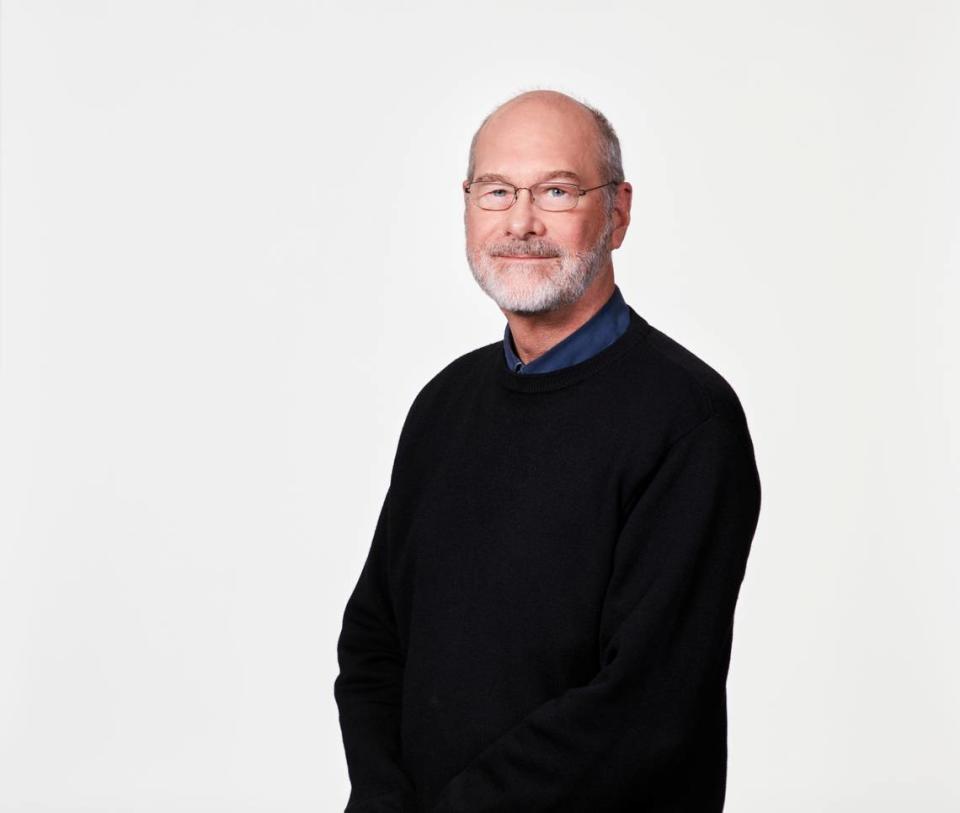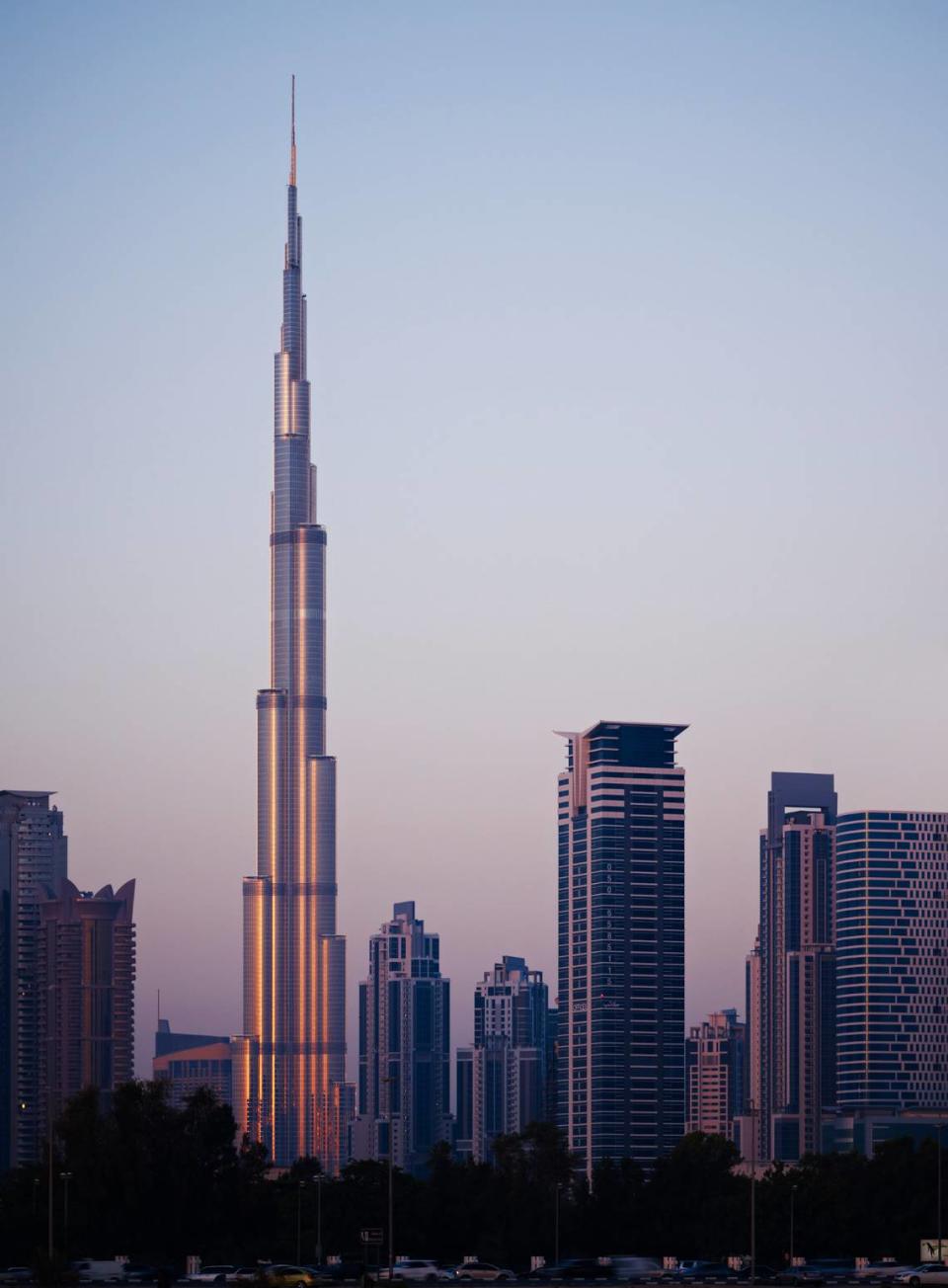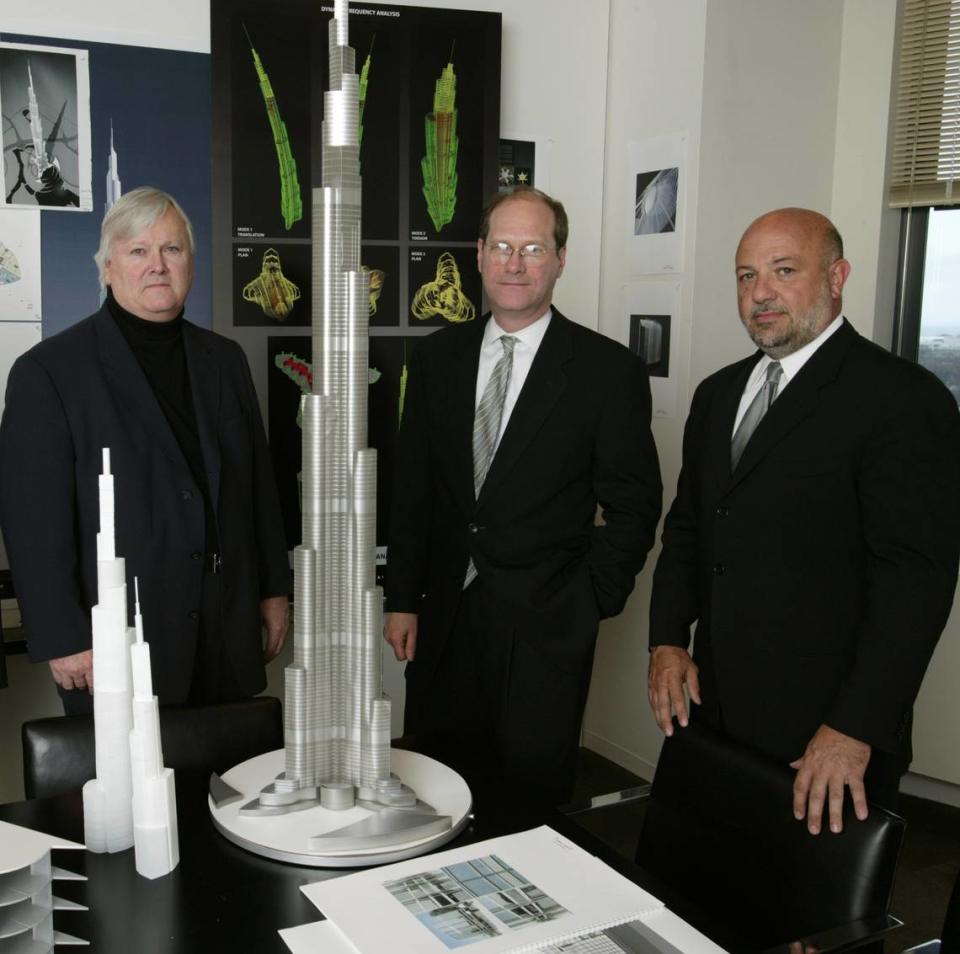How high can buildings get? IL engineer who helped build the world’s tallest has an answer
Do you have a question about U.S. history, popular culture, celebrities, trivia, other topics you are curious about in this wondrous world of ours? Please send your questions to newsroom@bnd.com and we’ll try to find the answers. Here’s today’s topic:
Bill Baker, who led the Chicago-based structural engineering team for the world’s tallest building, the Burj Khalifa in Dubai, is amazed at the popularity of observation decks of mega towers, including the glass balcony the public can visit on the 103rd floor of Chicago’s Willis Tower.
It’s billed as “The Ledge.”
“Not only do you want to go high, you want to hang out over the abyss,” Baker said of the Willis Tower balcony.
“Explain that one to me,” he said with a laugh.
“I don’t understand it other than I experience it myself.”
Baker said the Burj Khalifa has added observation space since it opened in 2010.
Humanity’s fascination with building structures higher and higher may not be the easiest thing to explain, but Baker has made his mark in the skyscraper industry.

The Illinois connection
Baker is part of Illinois’ connection with the construction of the Burj Khalifa, which is in the United Arab Emirates and is 2,717 feet, or 828 meters, high.
While Baker led the structural engineers for the world’s tallest building project, the chief architect was Adrian Smith. At the time, they both worked for Chicago-based Skidmore, Owings & Merrill.
“Chicago is one of the world capitals for tall building architecture and engineering,” said Baker, who grew up in Fulton, Missouri, went to the University of Missouri and would visit St. Louis with his family.
Along with being home to the Willis Tower, formerly known as the Sears Tower, Chicago is the headquarters of the nonprofit Council on Tall Buildings and Urban Habitat, which has a treasure trove of information about the tallest buildings across the world on its website at www.ctbuh.org.
The Willis Tower was the world’s tallest building from 1973 to 1998. It stands at 1,451 feet high. Since 1998, over 20 skyscrapers have been built, mostly in Asia and the Middle East, to knock the Willis Tower down to the 23rd highest building in the world.
Baker also said the University of Illinois, where he earned his master’s degree in engineering and where he lectured last fall, has one of the highest rated structural engineering programs in the country.

Reaching new heights
Baker is quick to note that designing a building over a half mile high like the Burj Khalifa takes more than a couple of people.
“We had 90 people working on this thing,” he said of Skidmore, Owings & Merrill.
“Adrian led the architectural team, I led the structural team,” he said.
Smith has since started his own company, Adrian Smith + Gordon Gill Architecture LLP in Chicago, and is the architect for a building that would exceed the height of the Burj Khalifa but construction has halted on that project known as the Jeddah Tower in Jeddah, Saudi Arabia.
The exact height of this skyscraper has not been announced. Developers have said it would be at least 3,280 feet, or 1 kilometer high.
So that brings us to wonder, just how high can a building get?
Baker matter-of-factly gives his answer: “I think one could, in a fairly reasonable cost and reasonable time frame, do like a mile or even two kilometers.”
A two-kilometer high building would be 1.24 miles or 6,561 feet in height.
Baker said the supertall structures “are like Swiss watches” and not a speck of space can be wasted in the design and then operation.
“It has to work for architecture, it has to work for structure, it has to work for construction, it has to work for interiors, it has to work for the mechanical, electrical, plumbing, it has to work for sustainability and so it’s a very, very complicated thing.”
And for a building to get nearly a mile and a quarter high, it would require a design that has not yet been developed.
Baker describes a building’s design as a “species.” A new one was developed for the Burj Khalifa, and it’s called the “buttressed core” because it has a narrow hexagonal core center and three wings emanating from the center to offer support. When the wind is blowing against two of the three walls, the third one works to resist the force of the wind.
“The wonderful thing about design, is you don’t have to evolve, you can create new, you know, by working with your team,” he said.
But this new design and construction cost for a building over a mile high, of course, would come with a steep price.
“Would it be cheap? No,” Baker said. “But I think it could be affordable in the sense that the value would greatly exceed the construction cost.”


